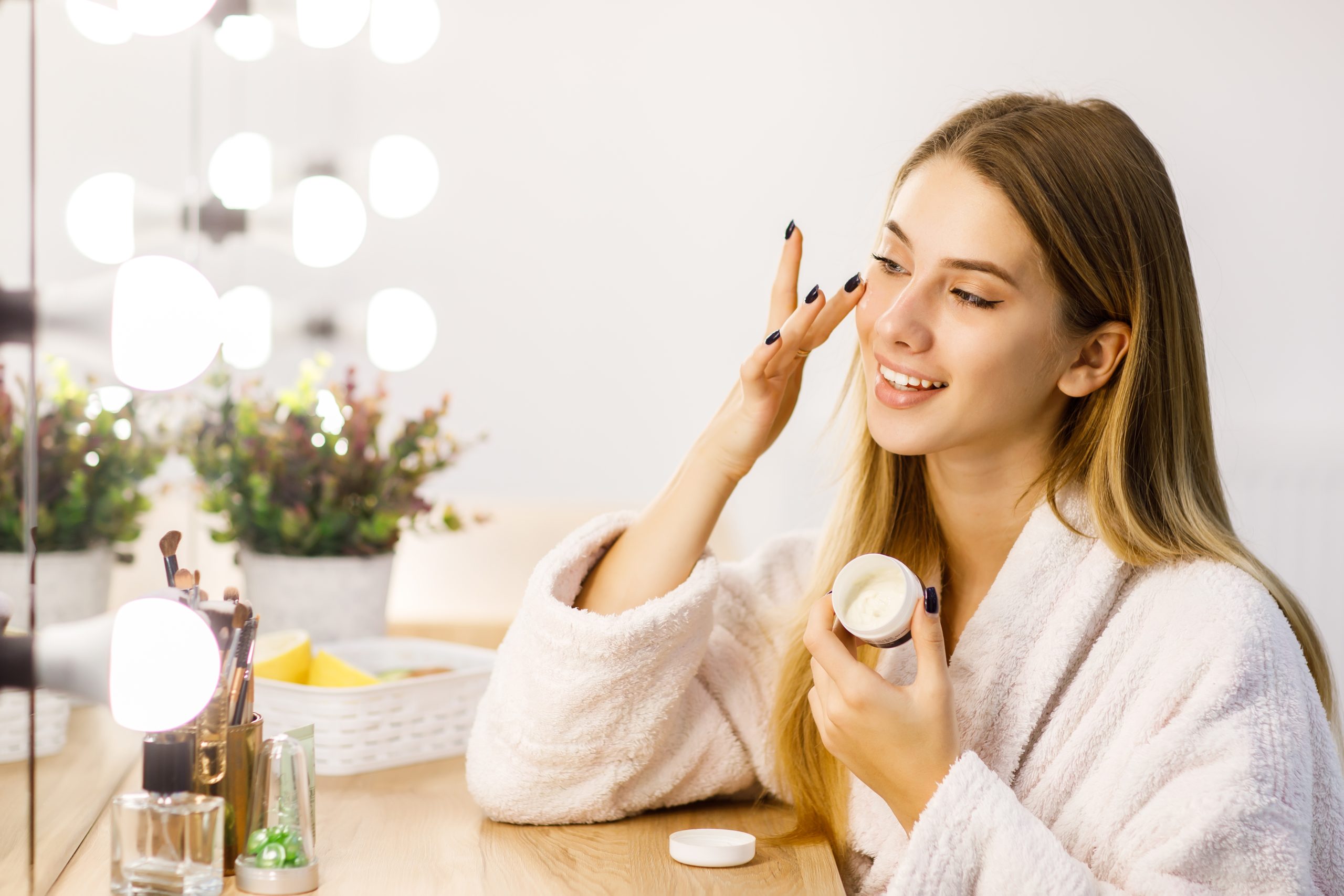
Learn about healthy skin care with our expert guide.
“If you’ve been chasing that flawless, natural glow without breaking the bank — here’s a centuries-old beauty trick making a massive comeback, and you can try it today.”
In the ever-evolving world of skincare, sometimes the simplest remedies deliver the most remarkable results. Using ice for face treatments—a practice that dates back centuries—has resurged as a powerful, cost-effective technique embraced by beauty enthusiasts and celebrities alike. This ancient beauty secret harnesses the transformative power of cold therapy to deliver glowing, rejuvenated skin without expensive products or complicated routines.
If you’ve been chasing that flawless, natural glow without breaking the bank — here’s a centuries-old beauty trick making a massive comeback, and you can try it today.
Ice therapy, also known as ice facials or cold therapy, involves the controlled application of ice to the skin’s surface. This straightforward technique uses the skin’s natural response to cold temperatures to trigger various biological processes that enhance appearance and health. Unlike many trendy skincare solutions, ice therapy requires minimal investment while delivering impressive benefits.
When ice contacts your skin, it triggers an immediate physiological response. The cold temperature causes blood vessels to constrict (vasoconstriction), which reduces blood flow to the area. Once the cold stimulus is removed, these vessels dilate again (vasodilation), increasing circulation and delivering fresh oxygen and nutrients to skin cells.
This process, known as the “vascular gymnastics effect,” helps strengthen capillary walls over time while simultaneously reducing inflammation and swelling.

While both harness the power of cold, ice facials and cryotherapy differ significantly in application, intensity, and purpose:
Ice facials provide gentler, localized benefits perfect for regular skincare maintenance, while cryotherapy delivers a more intense, systemic response typically used for pain management, recovery, and occasional skin rejuvenation treatments.
Ice therapy works wonders for inflammatory skin conditions, particularly acne. The intense cold significantly decreases redness and swelling by constricting blood vessels and inhibiting the production of inflammatory mediators. Additionally, cold temperatures slow bacterial growth, one of the primary culprits behind acne breakouts. Want to explore a rejuvenating at-home skincare recipe? Check out this easy DIY guide for radiant skin here.
Enlarged pores and excess oil production create the perfect environment for breakouts and contribute to an uneven skin texture. Ice facials temporarily tighten skin and constrict pore openings, making them appear smaller and less noticeable.
The cold temperature also slows sebaceous gland activity, reducing oil production for several hours after treatment. This dual action creates a smoother canvas for makeup application and helps prevent the midday shine that often plagues those with oily complexions.
The alternating vasoconstriction and vasodilation triggered by ice therapy dramatically improves microcirculation in facial tissues. This enhanced blood flow delivers essential nutrients and oxygen to skin cells while efficiently removing toxins and waste products.
For irritated, sun-damaged, or sensitized skin, ice therapy provides powerful relief through its anti-inflammatory properties. The cooling effect immediately calms heat and discomfort while reducing the inflammatory response that can cause lasting damage.
Ice application helps prevent peeling and prolonged redness by protecting skin cells from further stress and promoting faster recovery. For conditions like rosacea or persistent facial redness, gentle ice treatments can temporarily neutralize flushing and provide welcome comfort.
Morning puffiness, under-eye bags, and facial bloating often result from fluid retention in facial tissues. Ice therapy excels at reducing this accumulated fluid through its lymphatic drainage effects. The cold temperature stimulates lymph flow—the body’s waste removal system—helping to flush excess fluid from facial contours.

The cold-induced tightening effect of ice therapy provides both immediate and gradual improvements in skin firmness. During treatment, skin appears temporarily tighter as surface cells contract in response to the cold temperature. Over time, regular ice facials may boost collagen production—the protein responsible for skin’s structural integrity.
Uneven skin tone and rough texture often result from poor circulation, inflammation, and sluggish cell turnover. Ice therapy addresses all three underlying causes by:
Creating an effective ice facial at home requires minimal supplies:
Optional enhancements include specialized ice facial tools such as ice globes, cryotherapy wands, or ice rollers, which provide similar benefits with added convenience and control.
Follow these steps for a safe, effective ice facial:
For enhanced results, perform ice therapy before applying serums or treatments to improve product penetration.
For most skin types, ice therapy can be safely implemented:
Morning applications help reduce puffiness and prepare skin for makeup, while evening treatments enhance product absorption and support overnight recovery processes.

Consider avoiding ice facials if you have:
Consult with a dermatologist before beginning ice therapy if you’re unsure about your skin’s suitability.
Discontinue ice therapy immediately if you experience:
Remember that gentle cold stimulation should feel refreshing and invigorating—never painful or uncomfortable.
Dermatologists generally agree that ice therapy offers legitimate benefits when performed correctly. Dr. Adarsh Vijay Mudgil, a board-certified dermatologist, notes that “cold therapy can temporarily improve circulation and reduce swelling, making it particularly effective for morning puffiness and inflammatory acne.”
For more dermatological insights, check this Healthline guide on the benefits and precautions of facial icing.
Ice therapy represents a rare intersection of skincare qualities: it’s accessible, affordable, natural, and genuinely effective. Unlike many trending beauty treatments that require significant investment with questionable returns, ice facials deliver visible benefits with virtually no financial commitment.
In our quest for perfect skin, we often overlook simple, time-tested remedies while chasing the next breakthrough product. Ice therapy reminds us that sometimes the most powerful skincare solutions aren’t found in expensive bottles but in returning to elemental treatments that work in harmony with our body’s natural processes.
Whether you incorporate ice-cold tools into your daily routine or reserve ice facials for special occasions when your skin needs extra rejuvenation, this cooling technique offers remarkable versatility. The refreshing tingle of cold therapy doesn’t just awaken your skin—it reconnects you to an authentic beauty practice that transcends trends and delivers results generations of women have trusted.
Will you give your skincare routine the refreshing chill it needs?
Share your ice facial experiences! Have you tried using ice on your face? What benefits did you notice? Comment below with your results or questions about incorporating cold therapy into your skincare routine.
Subscribe to our newsletter for more natural skincare tips and tutorials delivered straight to your inbox. Join our community of beauty enthusiasts discovering the power of simple, effective skincare solutions.
Try the 7-Day Ice Challenge! Commit to a week of morning ice facials and document your skin’s transformation. Tag us in your before and after photos using #IceFacialChallenge for a chance to be featured on our page!
Remember: Beautiful skin doesn’t always require expensive products—sometimes the most powerful ingredients are the simplest ones nature provides. Curious to start your own cold therapy ritual? Unveil radiant skin with this simple DIY beauty trick today.
No comments yet. Be the first to comment!

Recent Comments